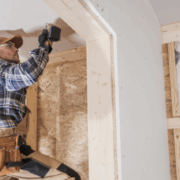Can You Get Help With Your Down Payment?
Buying a home can feel out of reach for many would-be buyers — and down payments are often the biggest hurdle. Even a 3% down payment can seem impossible in today’s economy as home prices continue to rise.
But that doesn’t mean you have to give up on owning a home. Many buyers qualify for financial help that can make getting started easier.
What is down payment assistance?
Down payment assistance helps eligible buyers cover some or all of their down payment costs. Funding is provided by government agencies, community organizations and private institutions, with 2,466 programs currently operating nationwide. Most programs target first-time buyers, teachers, veterans and active military personnel, but eligibility requirements vary by state and program.
Assistance is available in a variety of forms, including:
- Cash grants funded by government housing authorities at the federal, state and local levels, nonprofit organizations and some financial institutions. Repayment is not required, but certain terms may apply, such as a five-year minimum residency clause.
- Discounted mortgages that reduce monthly costs and provide thousands of dollars of savings over the life of the loan.
- Forgivable mortgages that erase some or all debt once certain criteria are met, such as five years of continuous employment in an eligible field.
- Tax credits and deductions at the federal, state and local levels.
Do I qualify for down payment assistance?
If you are a low- to moderate-income buyer, a first-time buyer, teacher, veteran or active military member, you may be eligible for down payment assistance. Some assistance is provided automatically, such as first-time homebuyer tax credits or property tax abatements.
Other assistance, such as cash grants and forgivable loans typically require a direct application. Just be sure to apply in advance, as application and approval can add months to the purchasing process.
Not sure where to start? Reach out to discuss your best financing options.













